Enhancing Energy Transport Efficiency by Up to 30% with IoT and Digital Twins
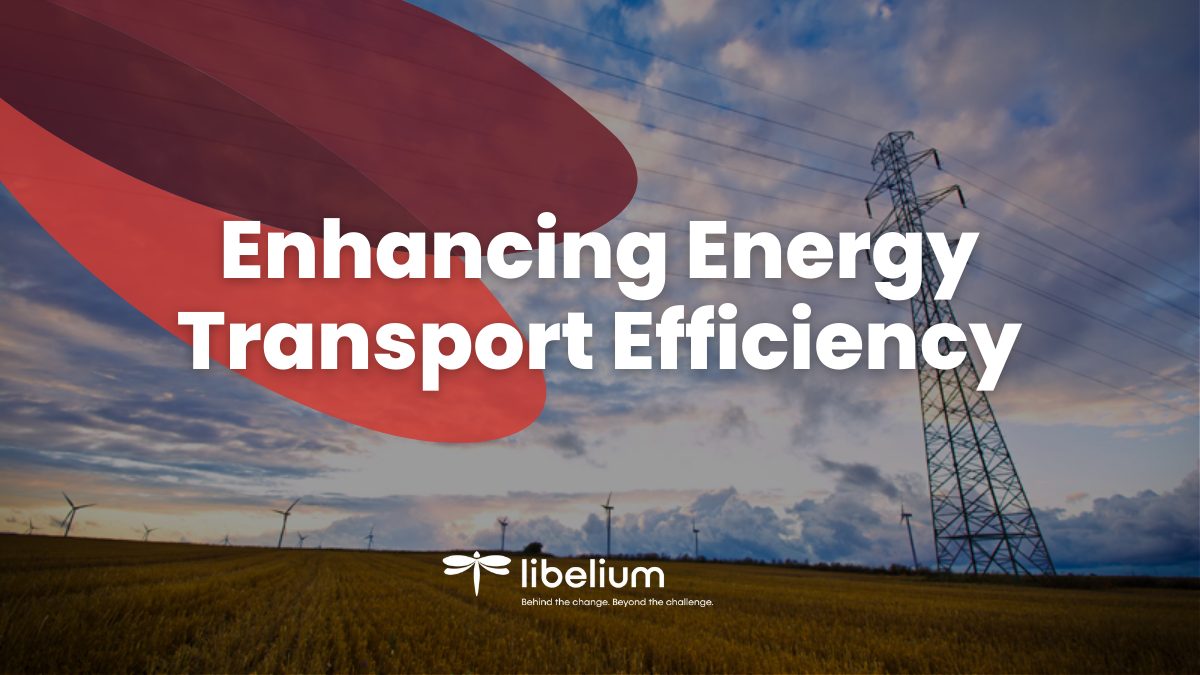
¿Do you want this case study in PDF?
The transition towards a cleaner and more environmentally friendly energy generation model has become unstoppable. Globally, more renewable energy capacity has been installed for four consecutive years than new fossil fuel and nuclear capacities combined. However, this comes with some added challenges that need to be addressed. Is the existing infrastructure capable of absorbing and transmitting this new energy? How can a traditional infrastructure cope with the volatility of weather-dependent energy?
Redeia, the Spanish energy transmission network manager, needed to answer these questions. Spain is becoming a benchmark for clean energy generation. Turning a necessity (energy isolation from Europe) into a virtue, Spain closed 2023 with more than 50% of its national consumption covered by renewables, reaching peaks of 73%.
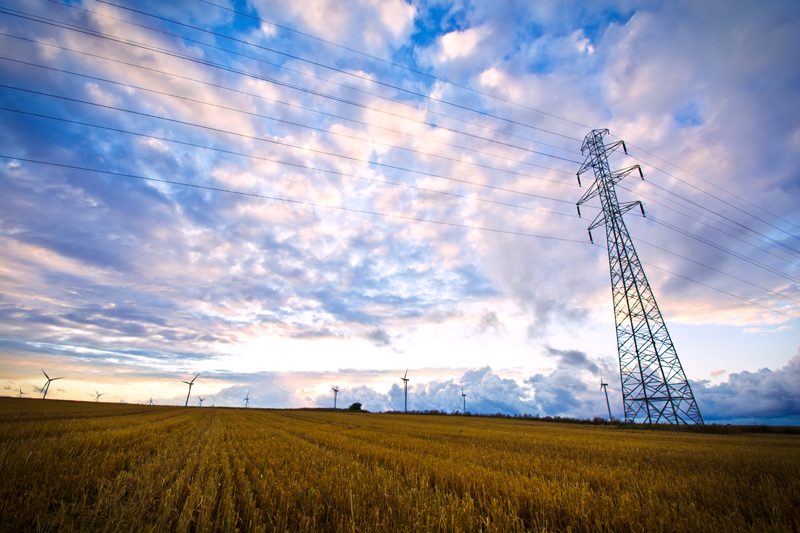
In an ambitious collaboration, Telefónica, Redeia (Spanish TSO), and Libelium have embarked on a transformative journey to revolutionize energy efficiency across Europe’s transportation sector. At the heart of this initiative lies the integration of Dynamic Line Rating (DLR) systems, cutting-edge weather sensors, and digital twin technology. This trifecta of innovation represents a major leap in optimizing energy transportation and distribution, aligning with global sustainability goals and pushing the boundaries of energy efficiency in transport in Europe.
The combination of these innovative technologies enables the provision of effective tools to Power Companies to address the significant challenge we currently face, where the world’s existing infrastructure operates below peak performance and must integrate a growing amount of renewable energy from multiple sources.
The Challenge
Traditional methods of managing energy flow within transportation networks are often static and unable to adapt to real-time conditions, leading to inefficiencies and increased carbon footprints. The challenge was to create a more dynamic, efficient, and environmentally friendly system capable of responding to varying conditions in real time to plan energy transport efficiently, ensure optimal energy distribution, and minimize waste.
The shift towards renewable energy sources introduces complexities in energy transportation due to their dependency on fluctuating weather conditions. This necessitates energy optimization for transportation systems that can dynamically adapt to these changes.
Optimization of DLR
Before delving into Libelium’s proposal, let’s start with some theory.
As previously set, the foundation of this project is anchored in the Dynamic Line Rating (DLR) systems, advanced weather monitoring equipment, and digital twin technology.
This tech combo is instrumental in elevating the effectiveness of transporting and distributing energy, resonating with the global pursuit of sustainability.
DLR refers to an electrical line’s load-carrying capacity, which varies in real time based on current environmental and operational conditions. The capacity is usually determined using static methods based on conservative estimates of environmental conditions.
The Solution
grid360: Libelium’s Proposal for Efficiency in Energy Transportation
grid360, the groundbreaking solution, emerged from the synergy between Telefónica’s connectivity solutions, Redeia, the Spanish Transmission System Operator, and Libelium’s advanced IoT technology for energy efficiency in transport. The project leverages DLR technology, which dynamically adjusts the capacity of power lines based on real-time environmental conditions. This approach requires precise, timely data, which is where Libelium’s high-quality weather sensors come into play. These sensors are certified by the World Meteorological Organization (WMO), ensuring their accuracy, reliability and performance in this particular use case. By accurately monitoring weather conditions, we can provide critical and trustworthy data to the DLR system.
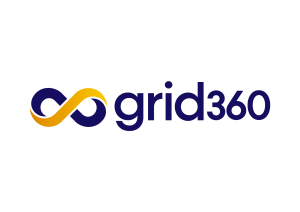
Coupled with creating digital twins for the meteorological conditions, this data-driven approach allows for a virtual representation of the physical world. This digital counterpart simulates real-world conditions and predicts how the network will react to various scenarios, optimizing energy distribution in previously unimaginable ways and forecasting capabilities of up to 72 hours.
This innovative tool not only allows for adjusting the performance of the existing network at any given time to achieve greater efficiency when granted by weather conditions but also enables the identification of periods where it is necessary to make adjustments downwards to safeguard the conditions of the electrical line.
The solution has already demonstrated its capacity to enhance energy optimization for transportation, with more than 170 weather stations installed to monitor over 500 km of power lines. As a result of this test, Redeia/REE has increased the injection of 200 GWh of additional renewable energy into the grid, equivalent to the consumption of 64,000 homes. This is the city of Orense, as Libelium explained to El Economista.
This, in turn, has meant that consumption is now managed through this solution, which has not required the installation of any additional lines or infrastructure. According to Redeia, up to 50,000 tonnes of CO2 that were not emitted have been saved.
Boosting Efficiency and Slashing Costs by Up to 30%
grid360 emerges as a cutting-edge solution, enhancing energy transport efficiency by up to 30% through IoT technology.
By integrating WMO-certified weather sensors and digital twin models, grid360 provides a comprehensive view of real-time meteorological parameters, such as wind, temperature, and solar radiation. This data enables the precise determination of the network’s maximum transport capacity at any given moment, facilitating a highly accurate predictive model for energy companies. This approach:
- Optimizes energy distribution
- Reduces economic costs
- Minimizes the environmental impact, paving the way for a digital and green transition
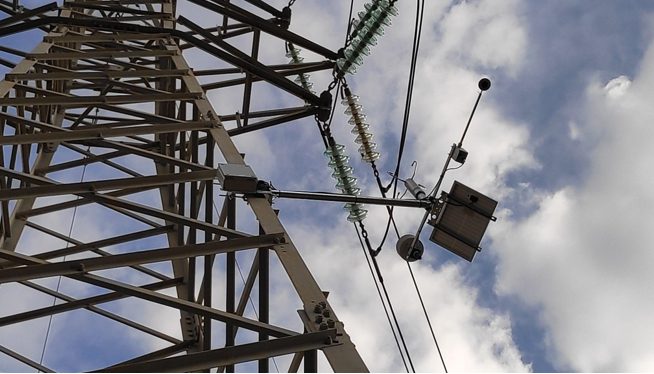
In this way, data from meteorological monitoring would be used, adapting the transport cycles according to the most suitable times for them from an environmental point of view. The effective wind, resulting from wind speed and direction in relation to the orientation and geometry of the line, plays a crucial role in DLR, acting as a natural cooler for the line itself and being the element with the greatest influence on line ampacity calculation.
A bit more theory to define ampacity
Ampacity refers to the maximum amount of electric current a conductor or device can carry before sustaining immediate or progressive deterioration. Also known as current carrying capacity, it is typically measured in amperes.
The graph illustrates the calculation of ampacity for a conductor with standard electromechanical characteristics concerning wind at different temperatures, where a significant increase in the line’s capacity is observed within the range of moderate winds —from 0 m/s to 6 m/s (equivalent to 20 km/h)—. Beyond speeds exceeding 6 m/s, the increase in ampacity exceeds 50%. These findings underscore the importance of obtaining extremely precise meteorological data to determine the adapted performance of the line.
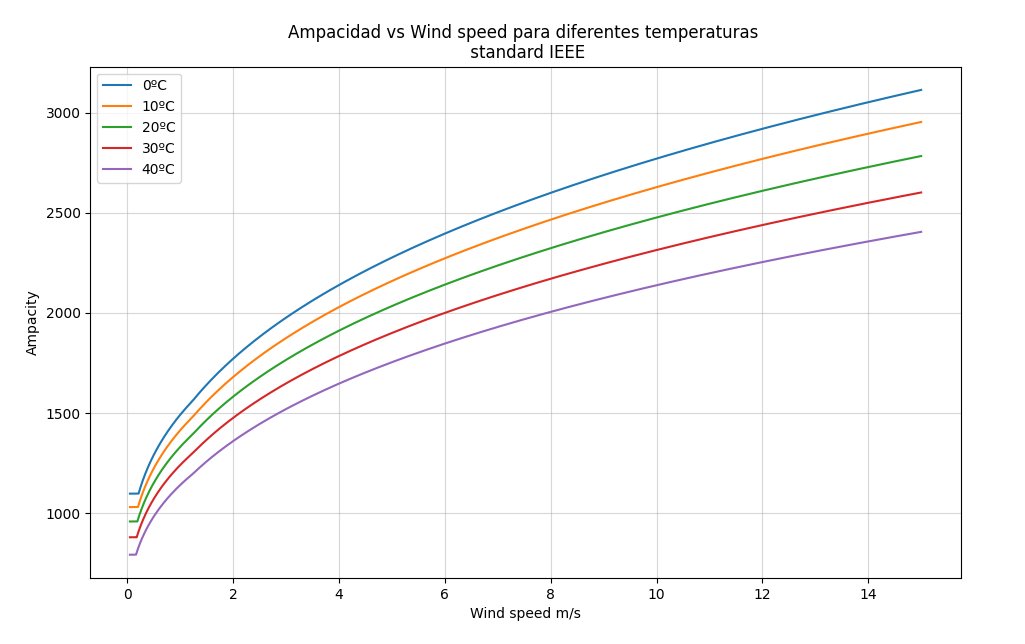
In addition, the digital twin will also make it possible to identify the flow of energy that can be injected into the infrastructure at any given moment, making it possible to plan the transfer up to 72 hours in advance.
Beyond the Challenge
The implications of this initiative extend far beyond energy efficiency and carbon reduction. It paves the way for smarter, more adaptable infrastructure capable of supporting the growing demands of urbanization while maintaining sustainability at its core. The partnership’s success demonstrates the potential of IoT, DLR, and digital twin technologies to transform the transportation sector and various facets of our modern world, embodying the essence of energy efficiency in transport in Europe.
Through continuous innovation and collaboration, Telefónica, Redeia, and Libelium are setting new standards for sustainable development. Our work exemplifies how technology can be harnessed to tackle some of the most pressing challenges of our times, driving us toward a more efficient, sustainable, and interconnected future.
grid360 addresses the energy sector’s immediate challenges and signifies a profound shift towards a more sustainable and efficient future. Its integrated, technology-driven approach exemplifies how innovation can facilitate the transition to cleaner energy with minimal environmental impact. By aligning energy practices with global sustainability goals, grid360 is a beacon for the industry, offering solutions for today’s challenges and opening pathways to a sustainable energy future.
¿Do you want this case study in PDF?

